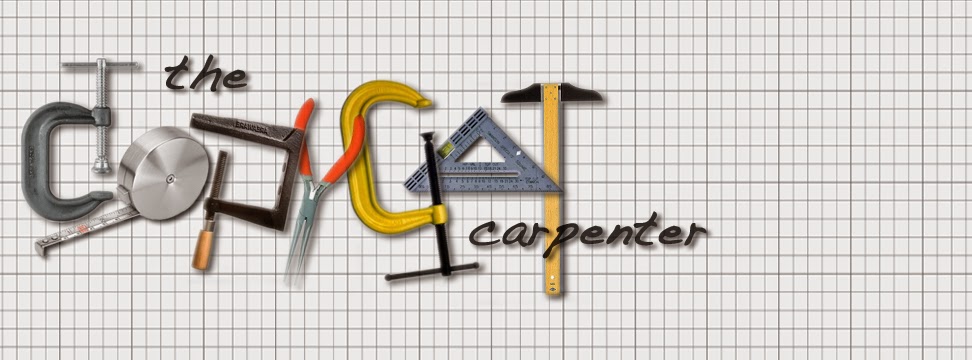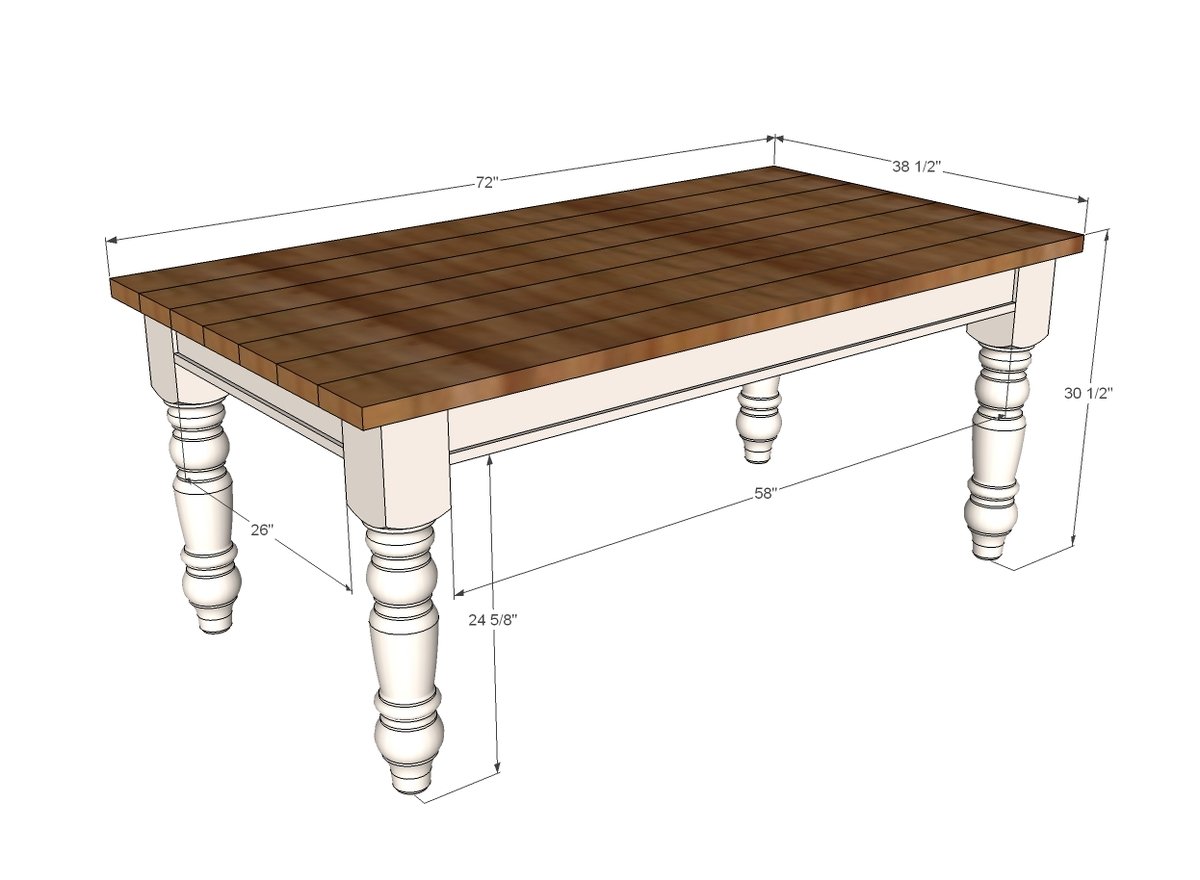First things first, you'll want to cut your 2x6's to size but I honestly wouldn't worry about absolute precision here because I wound up running a circular saw down the ends to ensure perfection after the boards were joined. Secondly, lets make sure you get your pocket-holes taken care of correctly. Ana doesn't give an example of the pocket-holes on this particular walkthrough buuut we can just borrow one from her original Farmhouse table shown below.
 |
| Courtesy of Ana-White.com |
 |
| Pocket-hole guide |
Once my tabletop was joined together I mentioned I ran a circular saw down the ends and to do that I followed Ana's video guide here. So after the all the work done to ensure a nice flat, even tabletop - I STILL had a lot of work to to. I busted out the random orbital sander and spent the next few hours before bed sanding the top as flat and smooth as I could. I brought one of our dinner plates out and while the plate did not rock at all, you certainly knew you were going across planks if slid over the width. I'm still very happy with my results just know I wasn't able to achieve absolute perfection, which I should mention is one of my downfalls - I always expect that out of myself - sometimes to no good end!
. . . . .
In-between all the work with the tabletop I applied another coat of paint to the base of the table and once that dried, hit it with a sanding pad to help create that aged "Old World Finish" that Ana also has a walkthrough for here. And wouldn't you know, its for this table too!
The next part of the walkthrough was the only part I ran into any real problems. Ana created another walkthrough for Staining and Finishing Tabletops for this exact table and while there is no mention of it in the walkthrough, Ana responds in the comments section
 |
| Distressed look on the legs |
. . . . .
"My sister really wanted a planked look - like boards are just resting on top - but functionality at the same time. So we choose not to use tongue and groove, but did Kreg Jig all the boards together. There were a few boards that were not as cooperative as I'd have liked, so I did fill any open gaps with clear silicone before applying the top coat (but after the stain). The top coat then really filled all the gaps so it's easy to wipe clean."
I waited a day or so until the Spar appeared dry and broke out the sander again and got to work only to find some spots on the table must not have been as dry as others because when the sander hit those spots it immediately looked like I poured a thick molasses on the sanding disc. Because of this I probably went through 7-8 discs before I had the top re-sanded back down. If I had it to do over again, I would still use the silicone as I want this table to last generations - I would just apply BEFORE the stain so that I could still lightly sand where the planks meet to ensure no residue was left, THEN I would stain and topcoat.
So, I wound up re-staining the top and this time I decided to thin the spar with some odorless mineral spirits as I had read somewhere this would help achieve a slightly more matte finish and also speed the drying time. Lightly sand in-between top coats and repeat the process until you are satisfied with the results. As Ana commented, I agree that the top coat really does fill in any gaps for a very easy to wipe surface.
With the top dried all that was left to do was put that bad boy together. I carefully brought the tabletop in from the garage and laid it top down onto some towels.
 |
| A very curious chocolate lab |
Anyways, a few measurements to get the placement right and now it's time to take advantage of those pocket-holes we drilled earlier. Using 2-1/2" pocket holes, attach the tabletop and have someone help you flip it over to see your finished project in all it's glory!
 |
| My labor of love |
I was able to find some old weathered chairs on Craigslist and negotiated the price to $25 a chair if I purchased all 6. I just felt like they totally matched the theme I was trying to achieve and had to have them. $150 may seem like a lot to spend but I could barely get 1 chair for that price much less 6 in some local decor stores. All we need now is some decor to bring this room to life but we'll save that for another blog. So there you have it, my first real project. I can't imagine being more proud of another build. I hope you all enjoy!






